We here at NIFS are what you can call “pattern people”; meaning our team of instructors focuses on fundamental movement patterns and how we can enhance them to allow for better function and goal achievement. Of course we start this process by having our members complete a Functional Movement Screen (FMS). The first assessment takes a look at the Squat pattern. Second in our series focusing on exercise basics, the squat will be the topic here, including how you can build a better one.
The Keys to a Great Squat
As we continue our focus on movement competency prior to attempting the most challenging exercise known to man (I still see this happening every day, in the gym and all over Facebook), we begin by taking a look at the major keys to a great squat. Much like the push-up described in a previous post, the squat is a super-versatile movement with so many real-life and performance applications in which it plays a role. From sitting into a chair (and standing up from that chair) to setting a PR in the back squat in your next powerlifting competition, the squat is a very powerful and functional movement we should all be training. Quite a few things are going on in a great squat; it employs core joint mobility in the ankles and hips, core stability, and motor control. These far-reaching aspects of movement are challenged and improved when incorporating a properly performed squat into your routine.
Squat Pattern Checklist
Refer to the following checklist to ensure that you get the most out of your squat pattern by performing it correctly. Just as you learned to squat, check it off from the ground up:
- Feet 1: Just beyond shoulder-width apart
- Feet 2: Slightly angle outward
- Feet 3: Weight over the heels and spread the floor
- Knees: Tracking over toes
- Hips 1: Hips push back to begin movement
- Hips 2: At or below parallel
- Hips 3: Hips and knees flexing at same time
- Spine 1: Angle of spine and tibia are the same
- Chest: Keep up, proud chest
- Arms: (top of press) Push-up to straight-arm position
- Head: Keep gaze straight ahead
Squat Variations
Here are just a few variations you can try after mastering the pattern. Remember, do the basic stuff really well before moving on to the really hard stuff.
Overhead w. Dowel 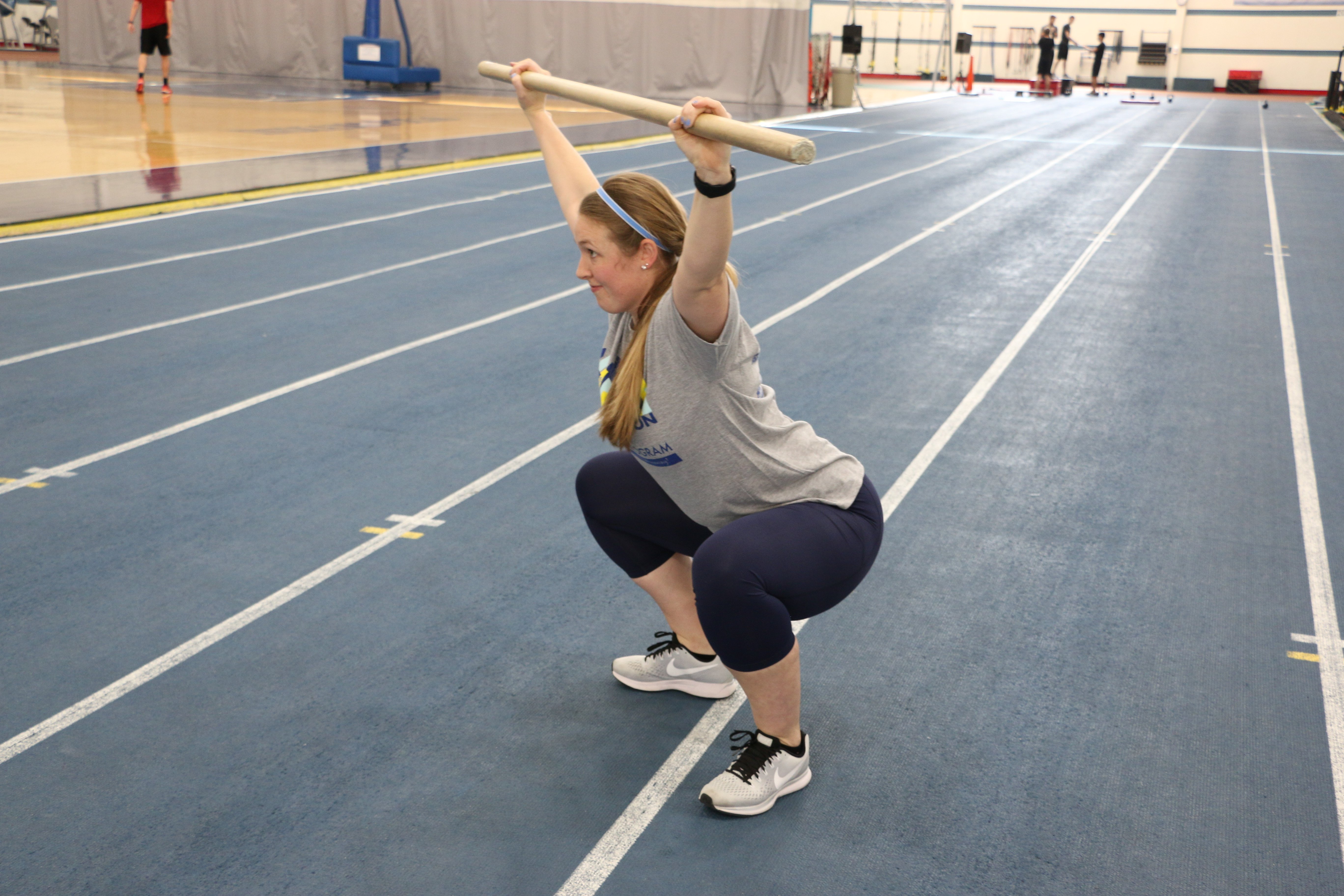
2KB Front Squat
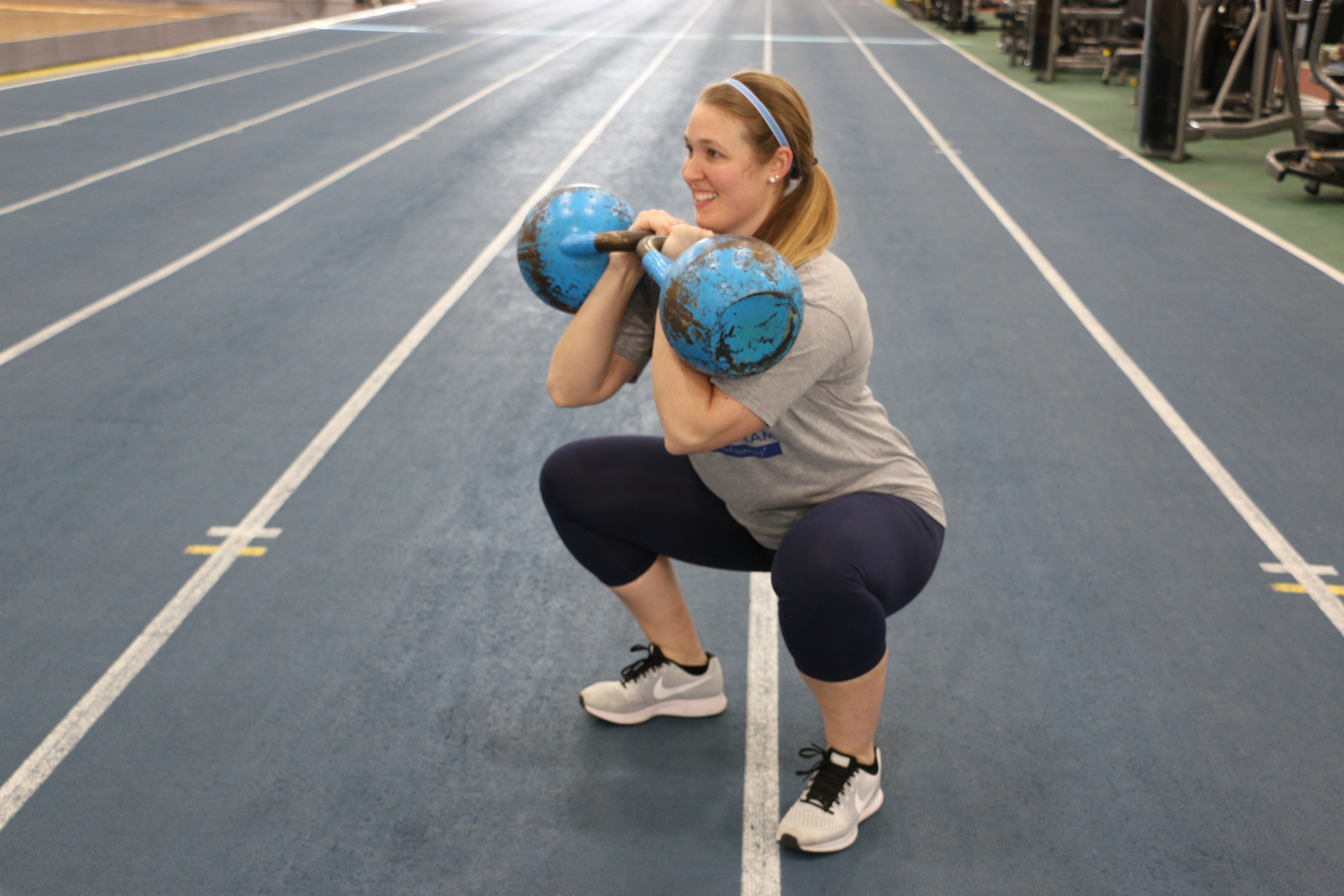
BB Back Squat
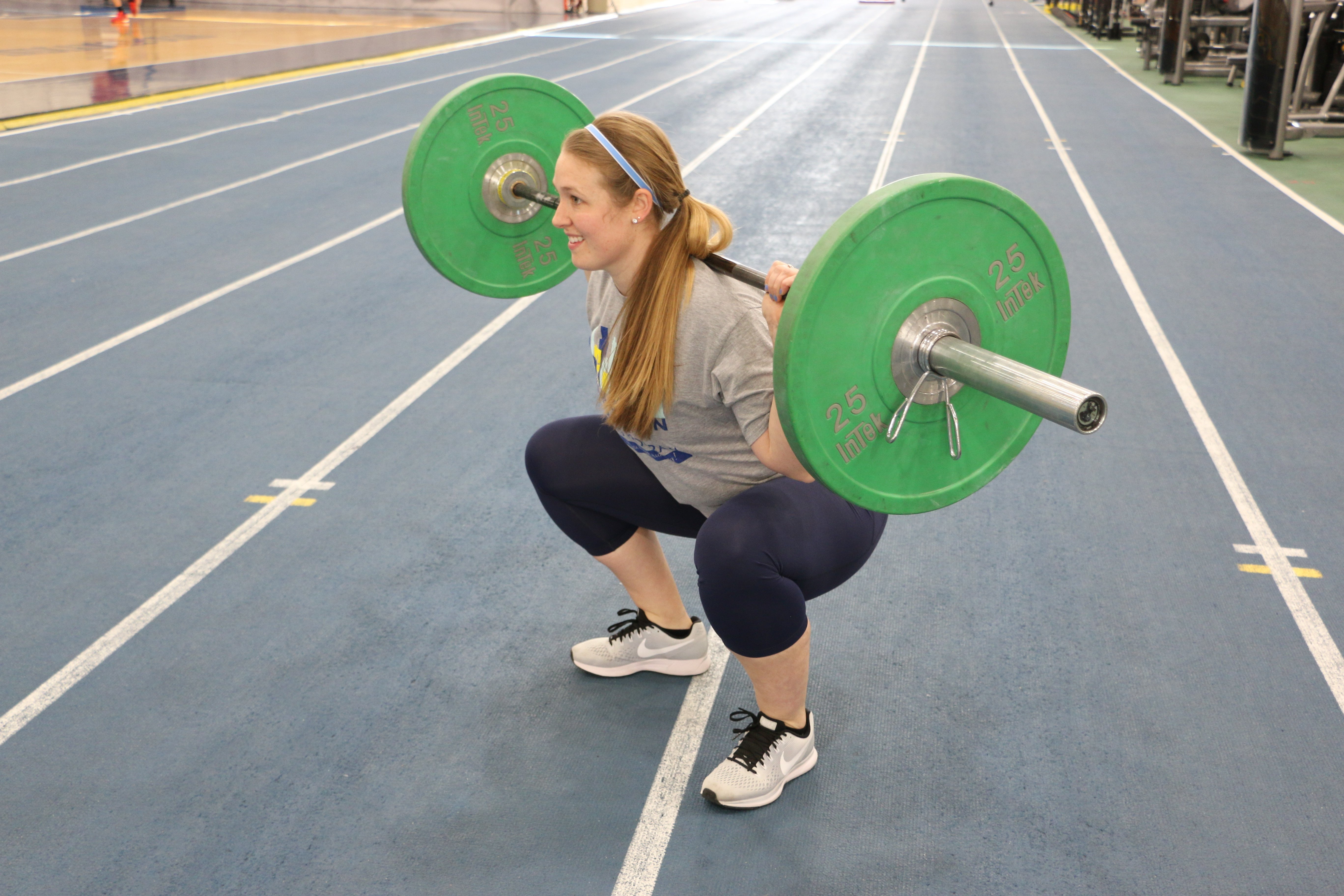

This blog was written by Tony Maloney, ACSM Certified Exercise Physiologist and Fitness Center Manager. To find out more about the NIFS bloggers, click here.

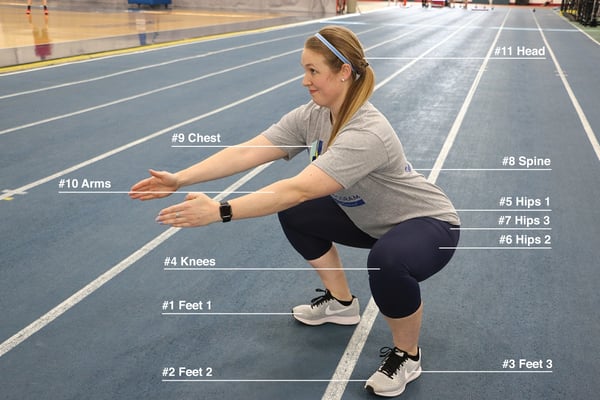
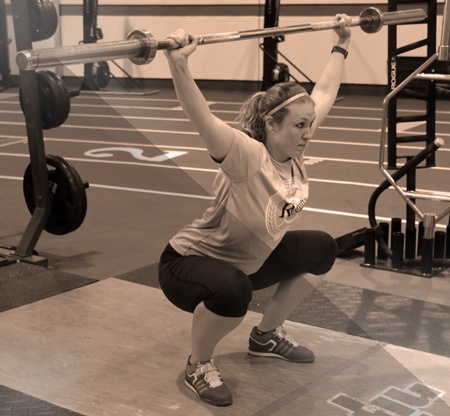 Squats, really any variation, are easily one of the most popular exercises out there today. The squat pattern is a fundamental and big-bang movement when done correctly. But before you throw a bunch of weight on a bar and step underneath it, it’s important to focus on some details to help minimize some minimums that will ultimately lead to a cleaner and safer squat.
Squats, really any variation, are easily one of the most popular exercises out there today. The squat pattern is a fundamental and big-bang movement when done correctly. But before you throw a bunch of weight on a bar and step underneath it, it’s important to focus on some details to help minimize some minimums that will ultimately lead to a cleaner and safer squat.